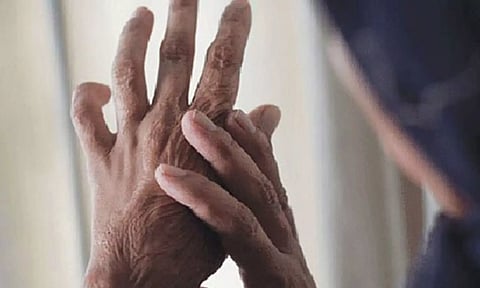

• SHWETA TRIPATHI
CHENNAI: The elimination of leprosy by 2030 is feasible in Tamil Nadu with case detection done on a priority basis in districts with high prevalence, stated a study published by the Tamil Nadu Journal of Public Health and Medical Research stated.
It said that leprosy elimination with 90% reduction of new cases in children, and 90% reduction of new grade two deformity cases is possible by 2030 and a close monitoring will lead to complete elimination in the State.
The study titled ‘Elimination is feasible in Tamil Nadu, India-Leprosy Case study’, authored by Dr TS Selvavinayagam, Director of Public Health and Preventive Medicine, and others, focused on the status of leprosy in Tamil Nadu and the interventions adopted towards elimination. New cases in Tamil Nadu were 4,252 cases in 2019-20, around 1,769 in 2020-21, and 2,434 in 2021-22 and 3,090 in 2022-2023.
As part of intensified case detection, every patient seeking health services, especially in the high endemic areas, should be screened for sign and symptoms of leprosy.
Seven districts – Kancheepuram, Erode, Tiruvallur, Villupuram, Salem, Krishnagiri and Chengalpattu – are on highest priority
Districts are categorised based on the prevalence of disease, and prioritised for intervention accordingly.
The study stated that there is potential for elimination and that indicators are not uniform in each district. As per the State Leprosy Control Unit, 7 districts – Kancheepuram, Erode, Tiruvallur, Villupuram, Salem, Krishnagiri and Chengalpattu – are on the highest priority. There are 10 districts on high priority, 4 districts on moderate priority and 17 others on low priority.
However, challenges such as absence of a fast and point-of-care diagnostic tool, lack of clinical expertise at all levels, limited research on newer drugs or vaccine and the societal stigma lead to delay in detection. “We’re closely monitoring new cases, ensuring a regular follow up too. For screening, we need to focus on the childhood cases, because it indicates a source of infection at the community level. We’ll be doing rapid extensive survey in the areas where we identify the infection at the community level itself. The rapid diagnosis is possible if we focus on the school-screening and contact-screening to ensure elimination by 2030,” said Dr TS Selvavinayagam.
He pointed out that the programme should also focus on de-stigmatisation of leprosy as it remains a major challenge, mainly due to the associated deformity that occurs due to the disease.
“Offering them an employment opportunity and empowering them would help to reduce the stigma,” he added